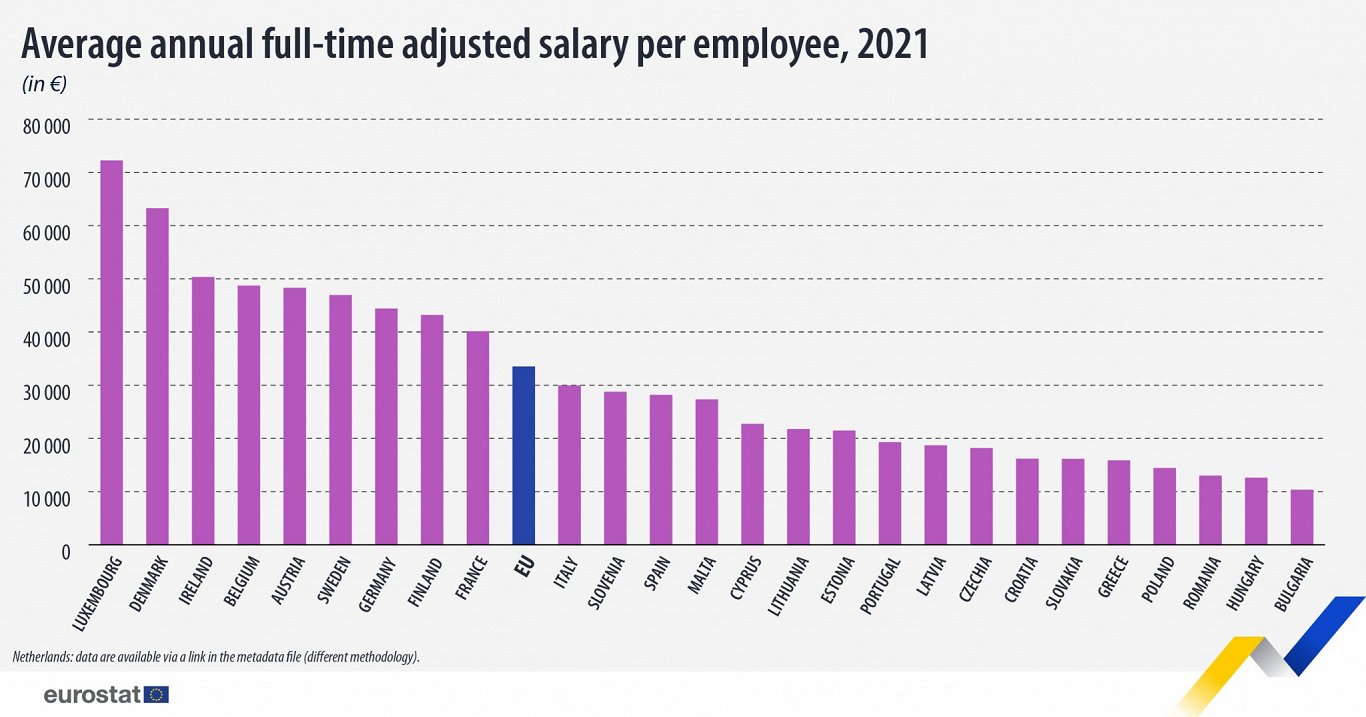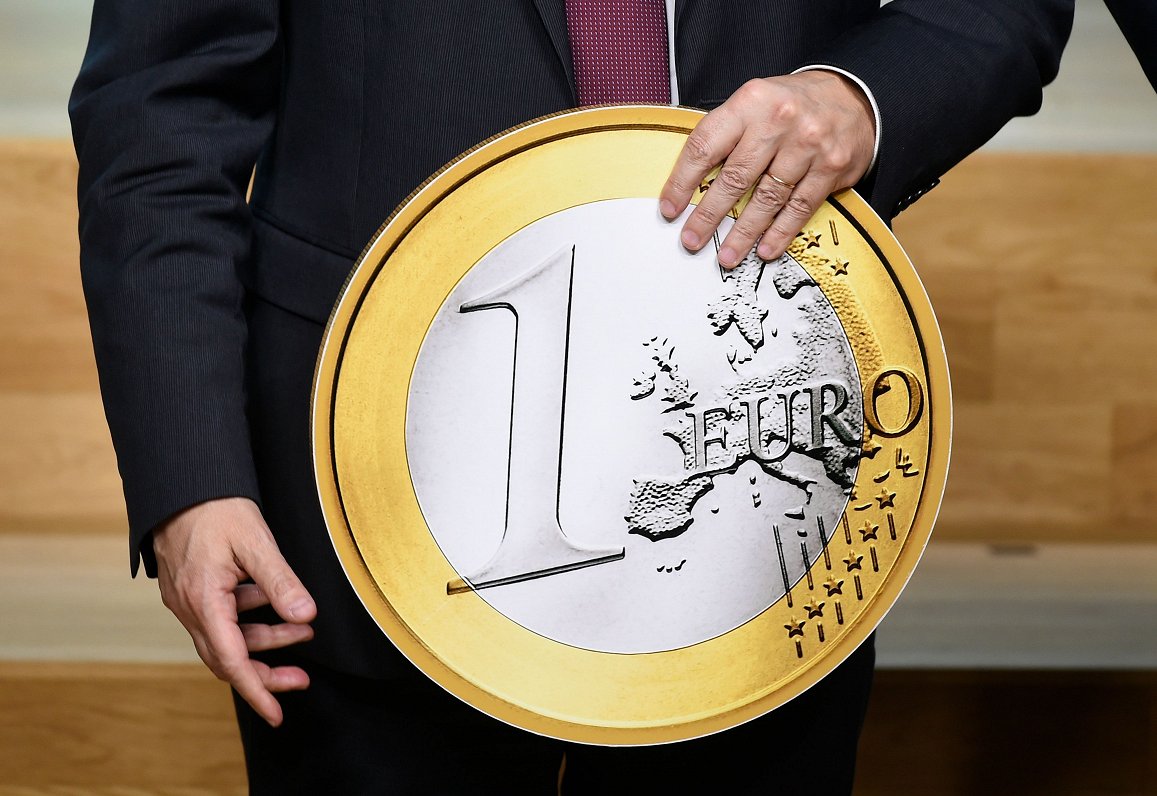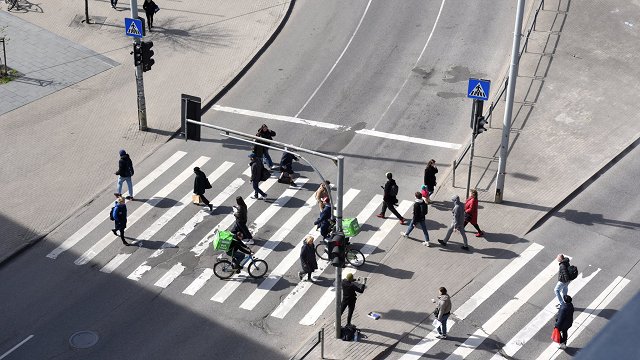The Blue Card Directive prescribes the use of this indicator for determining the average gross annual salary for each EU Member State and granting working permits to high-skilled workers. The Directive aims to attract highly skilled workers to the EU under more flexible admission conditions, with enhanced rights and the possibility to move more easily to another EU Member State for EU Blue Card holders.
The indicator is based on a combination of national accounts and Labour Force Survey (LFS) data. It is adjusted by expressing part-time salaries as full time equivalents.
Using the same methodology, Latvia's average annual full-time adjusted salary for 2021 comes out at less than €20 000, at €18 710. For Estonia the figure is €21 480 and for Lithuania it is €21 740, showing that there is still plenty of catching up for the Baltic states to do as they continue their convergence path.
While Latvian wages still lag behind its neighbors, there is some consolation in the fact that the average wage has doubled over the last decade. In 2012, the figure was just €9 910.
Among the EU Member States, the highest average annual adjusted full-time salary in 2021 was recorded in Luxembourg (€72 200), followed by Denmark (€63 300) and Ireland (€50 300). Meanwhile, the lowest values of the indicator were recorded in Bulgaria (€10 300), Hungary (€12 600) and Romania (€13 000).































